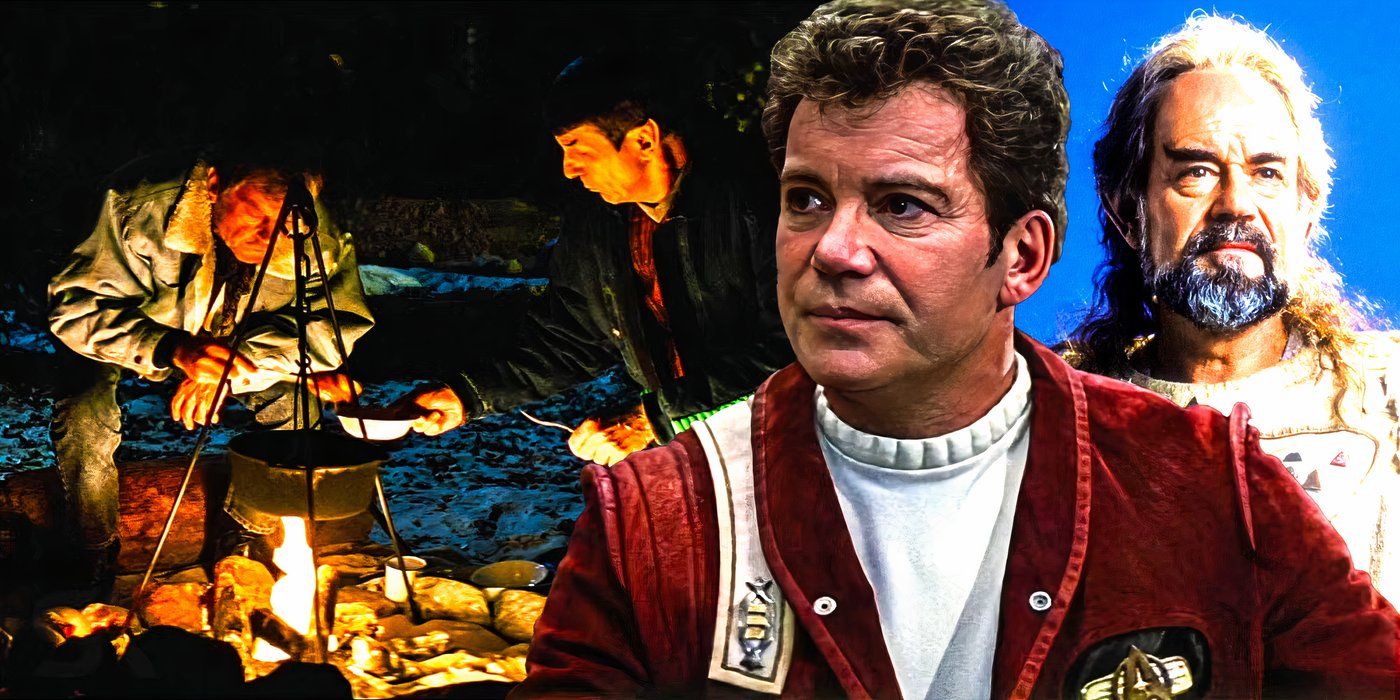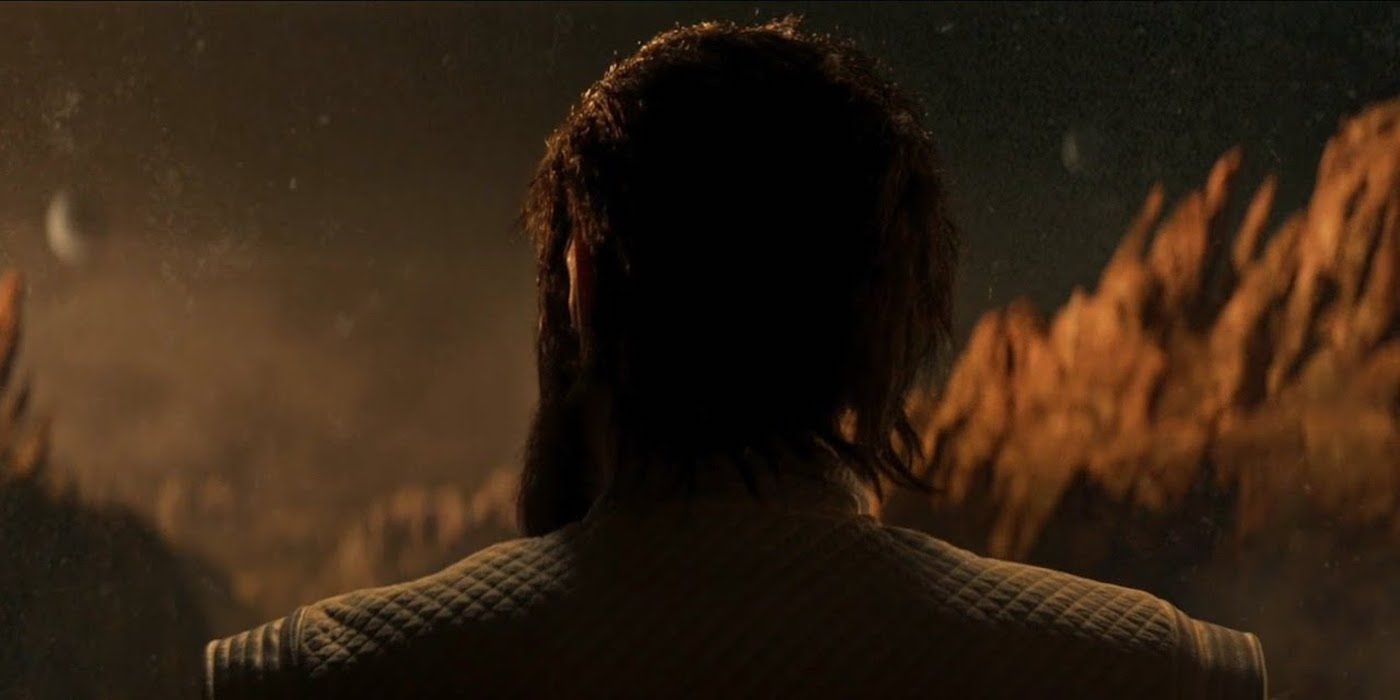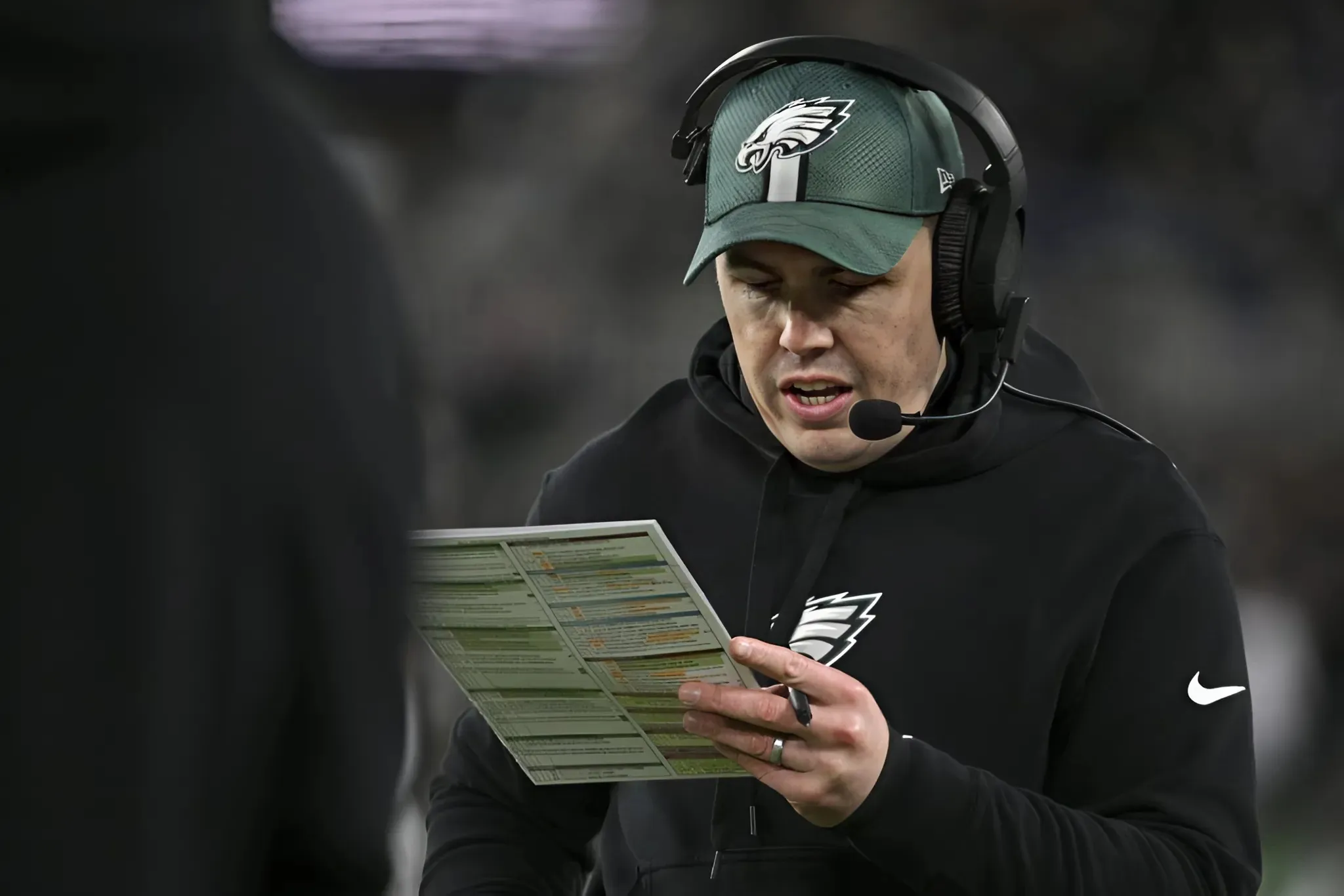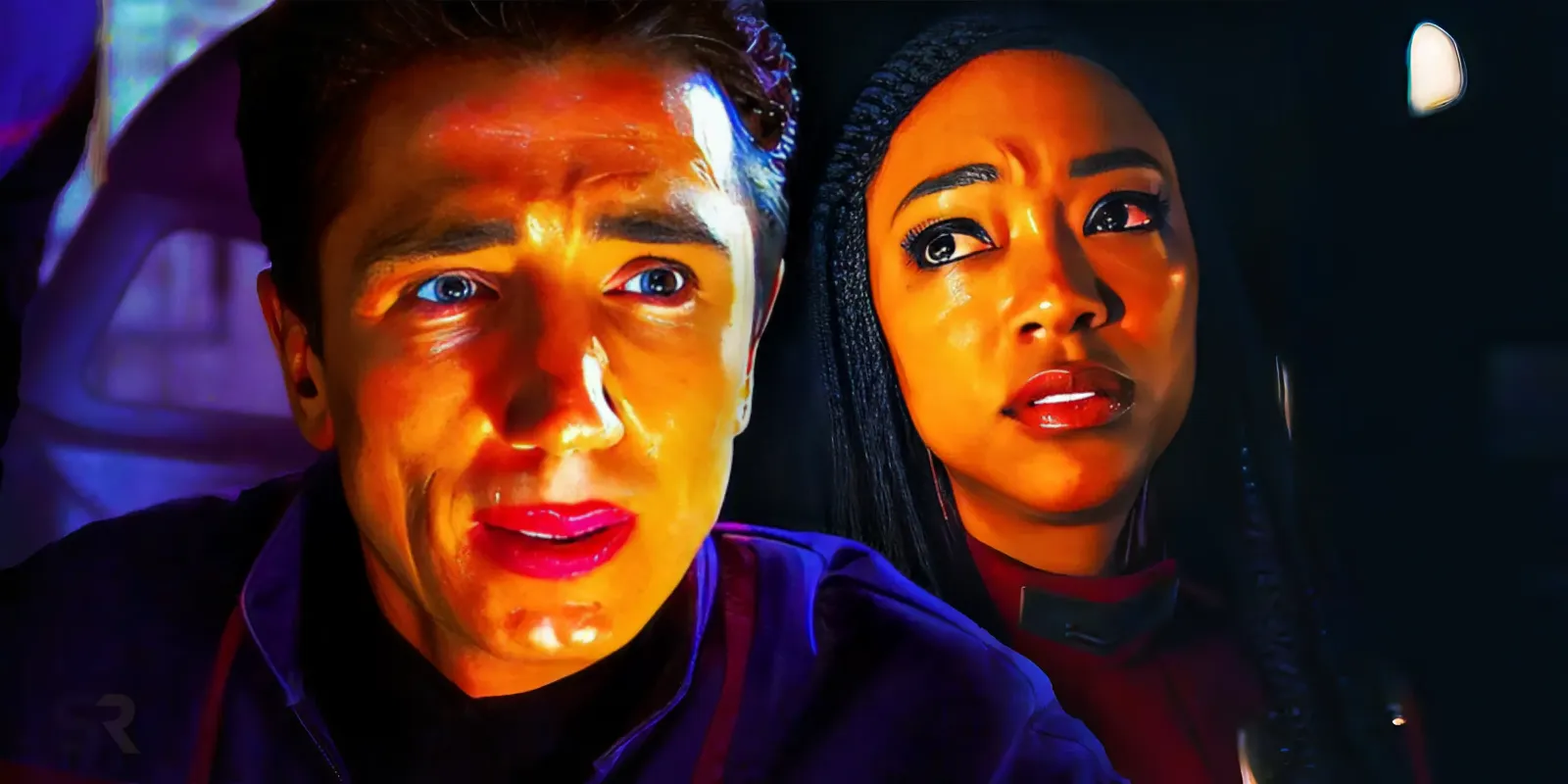William Shatner directed Star Trek V: The Final Frontier, Star Trek's most noble movie failure. Released June 9, 1989, Star Trek V marks its 35th anniversary in 2024. Shatner picked up the reins of the Star Trek movie franchise from Leonard Nimoy, who directed the successful Star Trek III: The Search for Spock and the blockbuster Star Trek IV: The Voyage Home. From a budget of $33 million, Star Trek V enjoyed a $17 million opening weekend before negative reviews and bad word of mouth sank William Shatner's lone Star Trek movie, which tapped out with a worldwide gross of $70 million and nearly ended the Star Trek movie franchise.

Director William Shatner also conceived the story of Star Trek V: The Final Frontier, often summed up as 'the crew of the Starship Enterprise meets God.' Shatner was inspired by the televangelists of the 1980s to create a villain named Zar (later renamed Sybok and played by Lawrence Luckinbill). Sybok was a holy man who steals the Enterprise to search for God, and Shatner hoped for Sean Connery to portray his Star Trek movie villain. As a first-time feature film director, William Shatner encountered numerous problems bringing Star Trek V to the screen, including a premise that producer Harve Bennett felt wouldn't work. And while Star Trek V did flounder, at its core was William Shatner's hope of delivering something special for Star Trek fans.
William Shatner Had Good Intentions For Star Trek V
Shatner envisioned an epic Star Trek adventure
William Shatner had lofty ambitions for Star Trek V: The Final Frontier. While producer Harve Bennett was correct that Shatner's idea for Captain James T. Kirk, Spock (Leonard Nimoy), the Starship Enterprise crew to find God was unworkable, would alienate audiences, and wasn't "fun,"Shatner wanted to reaffirm the eternal friendship between Kirk, Spock, and Dr. Leonard McCoy (DeForest Kelley). This is evident in the campfire scenes that bookend Star Trek V; bonding moments between USS Enterprise's central trio that have an easy charm, and convey that Kirk, Spock, and McCoy are each other's found family.
Thankfully, Sybok was unlike other Star Trek villains. William Shatner did not try to replicate what Ricardo Montalban did with Khan in Star Trek II: The Wrath of Khan. Montalban's genetically engineered tyrant was a malevolent force hellbent on revenge against Captain Kirk. Sybok did not have anger in his heart; rather, Spock's Vulcan half-brother was driven by his pursuit of God. Khan was a monster, but Sybok was a believer. Decidedly non-violent, Sybok used his Vulcan telepathy to heal others' pain. This was a means to an end for Sybok to create followers. However, the Vulcan heretic truly believed he was chosen by God, and Sybok made a heroic sacrifice when he realized "God" (George Murdock) was an evil pretender.
Shatner literally wanted the Enterprise to boldly go where no one has gone before.
William Shatner also conceived Star Trek V to be an epic adventure. This is evident in the design of the failed desert boomtown of Paradise City on the planet Nimbus III, and the Starship Enterprise breaking through the Great Barrier to reach the fabled world of Sha Ka Ree. Shatner literally wanted the Enterprise to boldly go where no one has gone before. Star Trek V was meant to be a voyage to fantastic places that also would be a journey within for Captain Kirk and his crew to find the ineffable. It didn't work out that way, but William Shatner was laudably striving for something grand.
Star Trek V Had Big Problems William Shatner Couldn't Solve
Shatner faced insurmountable budget, story, and special effects issues
William Shatner successfully directed episodes of his hit series T.J. Hooker, but a Star Trek feature film was an entirely different animal. Shatner faced problems with Star Trek V's story, budget, and visual effects that proved insurmountable. Even with a budget of $33 million, which was 50% more than Leonard Nimoy had on Star Trek IV, Shatner couldn't realize his ambitious vision, and Paramount wasn't willing to give Star Trek V more money. Shatner wanted Star Trek V's third act to include legions of angels, demons, and gargoyles to fight Captain Kirk and his friends, but Star Trek V had neither the budget nor the special effects expertise to make that happen.
Producer Harve Bennett edited Star Trek V to create a final film with a workable narrative.
Because Star Trek V's release date was summer 1989, Industrial Light and Magic, which did the visual effects for the previous Star Trek movies, already committed its best people to work on other films. As a cost-saving measure, Star Trek V's producers hired Associates and Ferren to create Star Trek V's visual effects, and their work was sub-par compared to ILM's expertise. Star Trek V's critical final act collapsed as "God" turned out to be a ghostly projection, William Shatner's 10 rock men for Kirk to fight turned into one unconvincing rock monster that was quickly scrapped, and there were no gargoyles or heavenly hosts. Unlike ILM, Associates and Ferren also had no experience filming the Starship Enterprise, delivering unconvincing outer space visuals.
Would Star Trek V Have Been Better If William Shatner's Vision Was Fulfilled?
What if Star Trek V was the movie William Shatner set out to make?
It's difficult to say if William Shatner's original vision for Star Trek V would have worked, but it likely would have been more interesting, either as a success or a failure. Shatner wanted Captain Kirk and the Enterprise to actually meet God before he was talked into "God" instead being an alien posing as the Almighty. That compromise underwhelms compared to Shatner's original idea, but it's understandable why Harve Bennett and Paramount feared how audiences would respond to Star Trek V defining who and what God is.
Leonard Nimoy wanted to play both Spock and Sybok but that idea was nixed by William Shatner and Star Trek V 's producers.
William Shatner also intended for Spock and Dr. McCoy to betray Kirk and join forces with Sybok. After the Vulcan revealed their innermost pain, Spock and McCoy would have turned on Kirk, leaving the Captain to stand alone against Sybok. While Kirk never shares his pain with Spock's brother, Leonard Nimoy and DeForest Kelley balked at Spock and Bones turning on Kirk after everything the Enterprise trio has been through together. Bill acquiesced with Leonard and De, but the result was Kirk, Spock, and McCoy following Sybok to Sha Ka Ree more out of curiosity than anything else.
Star Trek Brought Back Spock's Brother Sybok
Sybok has become Star Trek V's legacy

Star Trek creator Gene Roddenberry, in particular, hated Star Trek V creating Sybok as Spock's heretofore never-mentioned half-brother. Roddenberry considered Sybok apocryphal, and, after Star Trek V failed at the box office, Star Trek tacitly agreed. For decades, Sybok was not mentioned in Star Trek canon - until Star Trek: Strange New Worlds brought Sybok back in a shocker. The end of Strange New Worlds season 1, episode 7, "The Serene Squall" revealed Sybok was in a Vulcan prison overseen by Spock's (Ethan Peck) fiancée, T'Pring (Gia Sandhu), about 25 years before the events of Star Trek V.
Thanks to Star Trek: Strange New Worlds, Sybok has become Star Trek V's most enduring legacy. Star Trek: Prodigy season 1 also revealed that Nimbus III still exists in the 24th century, but Strange New Worlds is now poised to shed more light on Sybok's backstory for the first time in 35 years. Even with its numerous flaws, Star Trek V is watchable comfort food and has its share of fans who appreciate William Shatner's movie. Star Trek V: The Final Frontier is not the movie William Shatner set out to make, but at least he aimed for the heavens.



